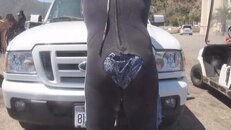The Bio Seals did nothing to stop or even slow the leaking. They were much more comfortable than latex on skin, though, so I'm actually kind of considering getting the neck seals just for that reason. But they're a bit of a pain to put on, so maybe not. Grant from Blue Flash sold me a pair of these stand-alone gloves, which he'd had in stock forever, for R100 (~$10) at the Dive Festival -- for that price, they're worth a try:
Northern Diver Neoprene Dry Gloves - DISCONTINUED OLD STYLE - The Scuba Doctor Dive Shop - Buy Scuba Diving Equipment & Scuba Gear. I just need to get some surgical tubing (and wait for an infection to clear) before I try them out. I'll be taking my drysuit back to him to have a look at the seals, in case there is something wrong with them (my bony-tendony wrists aside). I might also ask him to put smaller (trimmable) seals on the wrists, I'll see if he thinks that might be the issue.
After doing a few drysuit dives, I'm now very much unhappy with the thought of going back to my wetsuit (even for a while). It's
cold. Even with the leaky wrist seals, I'm much more comfortable in the drysuit for one dive. By the second dive the wet undergarment sleeves start to get really cold, though.





